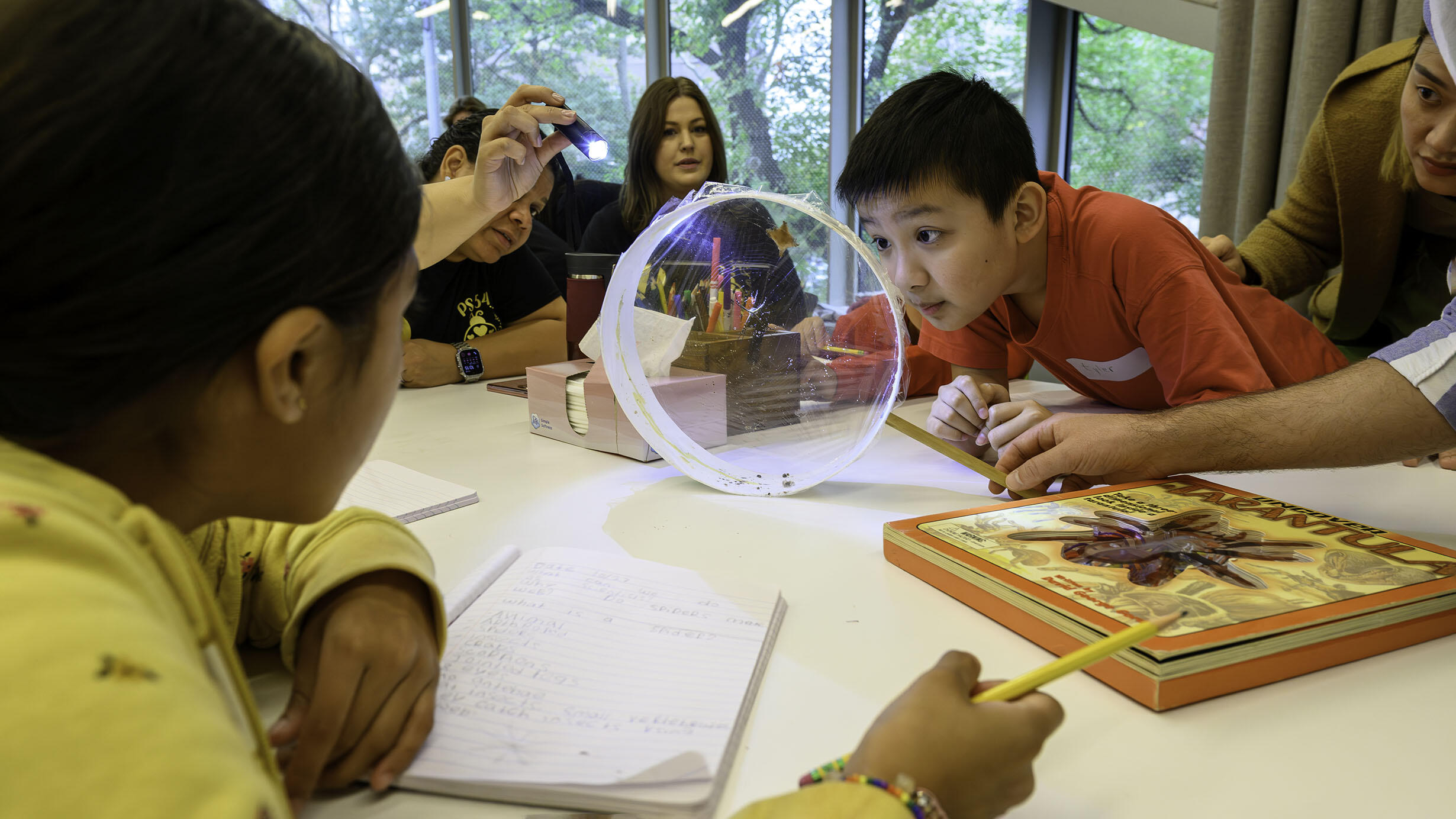AMNH Launches Week-Long Residency Field Trip Program for NYC Public Schools
 Alvaro Keding/© AMNH
Alvaro Keding/© AMNH The American Museum of Natural History this week officially launched the Beyond Elementary Explorations in Science (BEES) program, a new educational pilot that offers a week-long field trip experience for New York City public schools. One of three new educational programs launched in conjunction with the opening of the Richard Gilder Center for Science, Education, and Innovation, BEES invites participating classes to treat the entire Museum campus as their classroom for the week and engage with exhibitions, collections, educators, and scientists as part of a curriculum that combines science, math, literacy, and social studies for a hands-on, immersive learning experience.
“A field trip to the American Museum of Natural History has been a rite of passage for generations of New Yorkers, and I know first-hand the profound impact that early exposure to the wonders of science and the natural world can have on the trajectory of your life and career,” said Museum President Sean M. Decatur. “We’re proud to introduce a new, residency field trip experience for this new generation, for what will be a deeply engaging immersion in the Museum’s exhibitions, collections, and research.”
As a top destination for field trips, the Museum serves up to 400,000 school and camp group visitors each year. Whereas the traditional school field trip spans one day, BEES transforms that experience into a cross-curricular, week-long residency, creating a unique “school in a museum” opportunity for students and educators. In social studies, for example, classes might visit the Northwest Coast Hall to engage with Pacific Northwest Coast Native storytelling and history, while in math they can survey massive dinosaur fossils to learn about estimation and scale. In science, students can visit the Solomon Family Insectarium to understand the decline of insect populations worldwide, and the Davis Family Butterfly Vivarium to observe live butterflies and discover the butterfly lifecycle. When not exploring Museum exhibitions, classes will be based in the Gilder Center’s state-of-the art Weston Curiosity Zone classroom suite, where students will participate in hands-on learning activities, interact with live animals, and engage with Museum scientists and science educators. Each residency’s curriculum is co-developed by Museum educators with teachers from the visiting school.
In addition, all teachers participating in BEES will receive resources for continued learning in their classrooms, and families of BEES students will receive complimentary vouchers for future visits. These efforts build on the Museum’s hallmark Urban Advantage (UA) program, a citywide partnership between the New York City Department of Education and cultural organizations that launched in 2004 and served nearly 100,000 City students in 2022. In its pilot year, BEES will work with classes from UA schools and provide participating groups with bus travel to and from the Museum.
Teaching and Learning at the American Museum of Natural History
Since its founding in 1869, the Museum, with its mission of scientific research and science education, has played a unique role in the educational life of New York City and beyond. In addition to field trips, which are free for participating New York City public schools, the Museum’s educational offerings range from classes for young children to mentored research experiences for high school students, and professional development programs for teachers. Graduate level programs are offered through the Museum’s Richard Gilder Graduate School, including the Ph.D. program in comparative biology, as well as the Master of Arts in Teaching Earth Science residency program, which has prepared 167 Earth Science teachers, reaching approximately 80,000 students in New York and beyond, since 2012.
The Gilder Center opened in May and represents the most comprehensive addition and modernization of educational space at the Museum in a century with new classrooms, learning labs, and educational areas. In addition to BEES, new educational offerings based in the Gilder Center include programs in the Learning with Data classroom that teach students to practice computational thinking and data analysis, and those in the Studio that provide opportunities for high school and college students to develop competencies for jobs in fast-growing career fields.